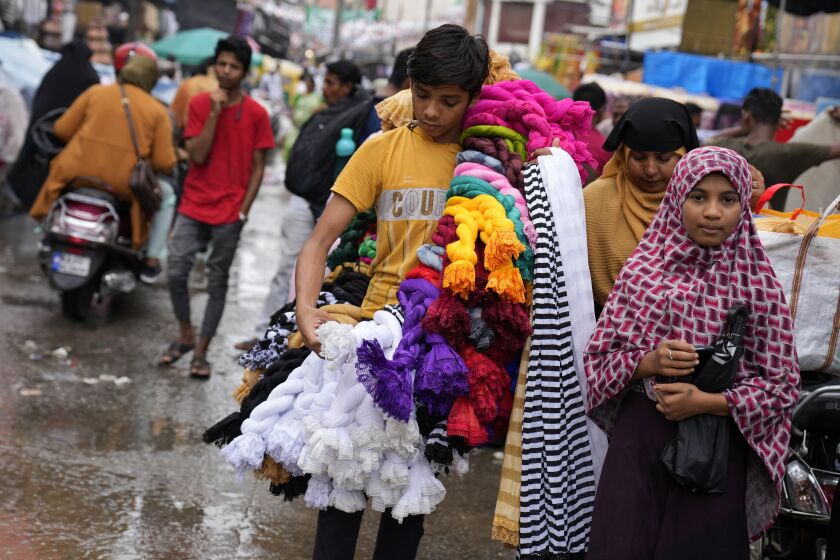I get irritated every time I come across vintage photos of Iranian and Afghan women wearing miniskirts and bikinis decades before they were forced to cover their hair and bodies.
The pictures themselves don’t bother me.
I just jump at the accompanying captions on social media – mostly by non-Muslims with savior complexes – that draw cursory conclusions about a country’s supposedly progressive past based on wardrobe resemblance mostly well-to-do women with what their mothers and grandmothers wore in their youth.
Not only are the comments simplistic in their approach, they are understated Islamophobic. The message is that any Muslim woman wearing the hijab is oppressed and devoid of any agency.
Some of those retro snapshots, along with the tone-deaf analyses, have resurfaced since the violent death of 22-year-old Mahsa Amini in Iran led to nationwide protests – and inspired other demonstrations of solidarity in the whole world – against the oppressive regime of the Islamic Republic and its proxy. hijab laws.
Amini, who was arrested by vice police for wearing her hijab too loosely, breathed her last days after her arrest in Tehran. Authorities said the Kurdish woman had suffered a heart attack, but fractured skulls and bruises etched into her limbs told a different story, prompting uproar.
It is no surprise that the vivid images of Iranian women and girls burning their hijabs and the growing death toll among protesters are attracting the attention of the international community and human rights organizations. Beating a woman to death for showing a few strands of hair under the guise of Islamic jurisprudence is unacceptable.
In this Monday, Sept. 19, 2022, photo taken by an individual not employed by The Associated Press and obtained by the AP Outside Iran, women flee from riot police during a protest over the death of Mahsa Amini.
There is a sincere and sincere concern for the well-being of Iranians there. But in this generous outpouring, I cannot help but think of the setback that has occurred when women in some non-Muslim majority countries want to wear a hijab. And in this semblance of empathy, fanatics are using the situation in Iran to find other ways to make life harder for Muslims within their own borders.
In France, female artists and actresses, including Juliette Binoche and Marion Cotillard, winked at dissident Iranians by cutting off some of their hair. Tremendous. Very appreciated. But that compassion was lacking when the French government, in the name of secularism, introduced its own laws aimed at controlling how people of faith – especially Muslim women – dress in certain spaces.
“To deny women the right to wear a hijab is just as patriarchal and authoritarian as to make them wear one,” noted Catherine Z. Sameh, associate professor of gender and sexuality studies at the University of California in California. Irvine.
India has certainly been on such an oppressive kick. Right-wing Hindu nationalists, who recently succeeded in banning the hijab in schools and colleges in the southwestern state of Karnataka, are defending the right of Iranian women to wear what they want while nullifying that same freedom for their fellow Indians.

A Muslim girl wearing a headscarf walks through a shopping district in Bangalore, India, Thursday, Oct. 13, 2022. Two judges from India’s highest court diverged on Thursday over a ban on the wearing of the hijab, a headscarf used by Muslim women , in educational institutions and referred the sensitive issue to a larger bench of three or more judges to settle.
Muslim female students in Karnataka and their advocates responded to the hijab ban by protesting as their Iranian counterparts had, eventually filing a lawsuit in the Supreme Court of India. Last Thursday, a two-person panel reached a split decision and referred the case to a larger bench of judges to settle.
“According to our constitutional system, wearing the hijab should simply be a matter of choice. It may or may not be a matter of essential religious practice, but it is always a matter of conscience, belief and expression,” Judge Sudhanshu Dhulia said in his opinion.
Having that choice is ultimately at the heart of the current movement in Iran, where most but not everyone is Muslim. “These are protests against obligatory hijab” – not the hijab, Sameh pointed out.
Roxanne Varzi, Sameh’s colleague and fellow Iranian-American, agrees, pointing out that Iranian women who want to wear the hijab are among those in the crowd demanding the rights of their friends and relatives who don’t want to. not cover your hair.
“They’re there because of their need and desire for choice,” said Varzi, a UC-Irvine professor of anthropology.
This gesture should sound familiar to many American women who have peers who would never want abortions but who have shown up at pro-choice rallies because they believe that only women – not the government, not a religious institution or a man – should make decisions about their body.
I hope these nuances will be kept in mind as others encounter Muslim women, with or without hijab, as efforts to control our clothing continue overseas.
They say clothes don’t make a man. They don’t make a woman either.
Rummana Hussain is a columnist and member of the editorial board of the Sun-Times.
Want to write a letter to the editor or an editorial? See our guidelines.

/cdn.vox-cdn.com/uploads/chorus_asset/file/24110601/Iran_Protests_The_Diaspora.jpg)